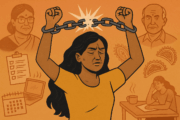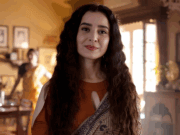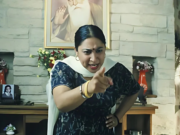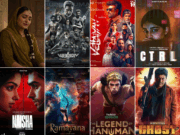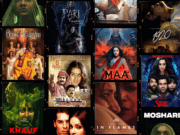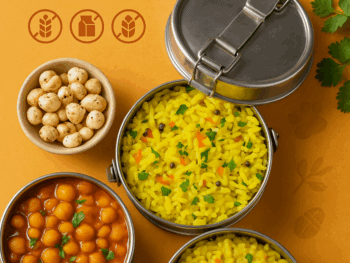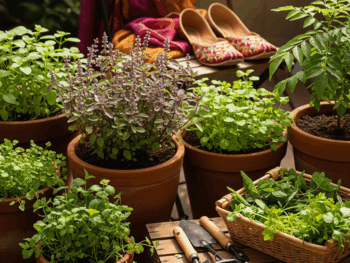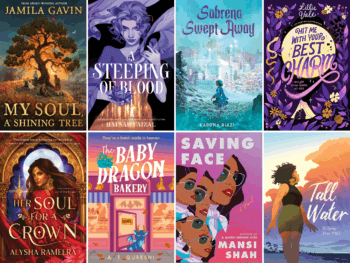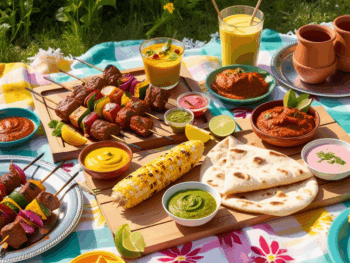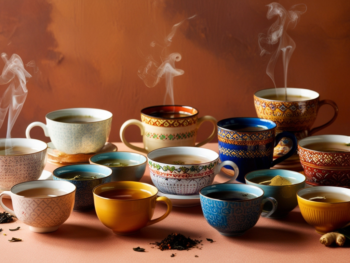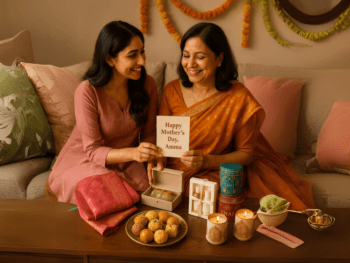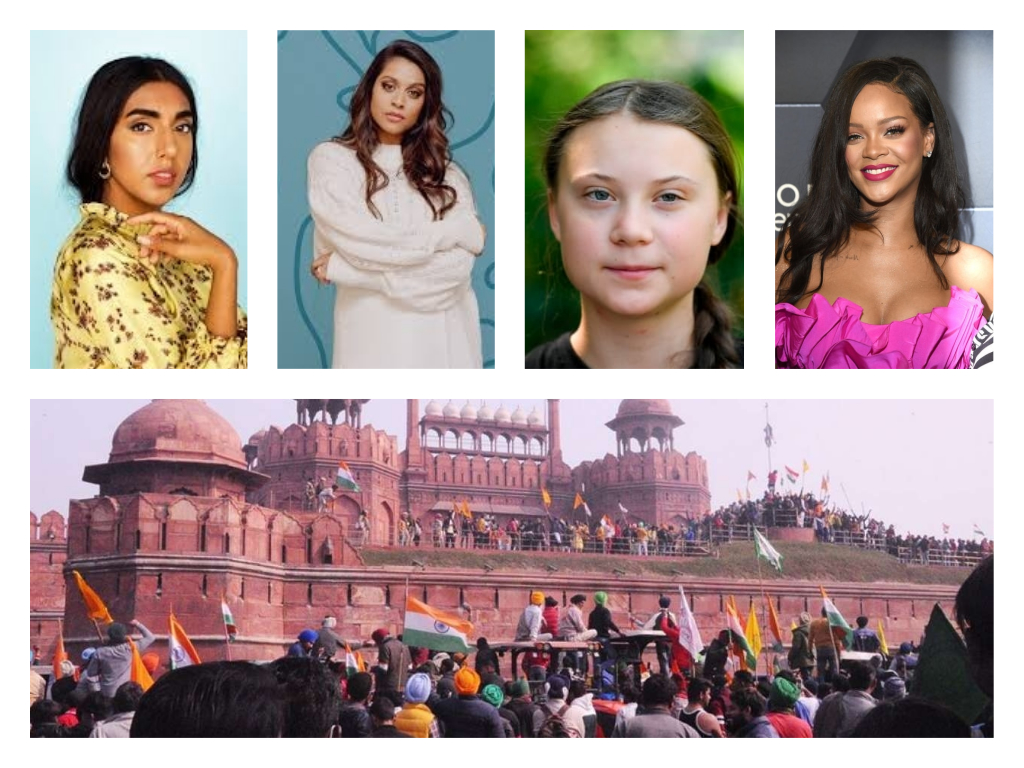
Indian Farmers Go Viral With Support From Rihanna, Greta Thunberg, Rupi Kaur & Lilly Singh
Lifestyle Feb 04, 2021
With celebs like Rihanna, Greta Thunberg, Rupi Kaur and Lilly Singh going viral for their support for the farmers, I needed to dig deeper. So, I asked noted former journalist and Professor Avinash Singh, Vice-Chancellor Emeritus of University of Technology and Management to help unravel the many layers of this #FarmersProtest movement and what went down at India’s iconic Red Fort.
As reported in November, hundreds of thousands of farmers from all states across India, descended on Delhi as part of their ongoing protests for their livelihood and for the government to repeal the three laws that would privatize the farming industry.
On January 26, 2021 on India’s Republic Day, a large rally was planned which would involved over 200,000 farmers from over 40 farmer unions which was to take place along various approved routes along the outskirts of central Delhi. However some of the farmers, in the thousands, diverted from the approved route and headed towards India’s iconic Red Fort culminating in violent clashes with the police. The clashes and their aftermath ignited a conversation in the nation, prompted passionate displays of support on social media, and caught the attention of mainstream media of the world.
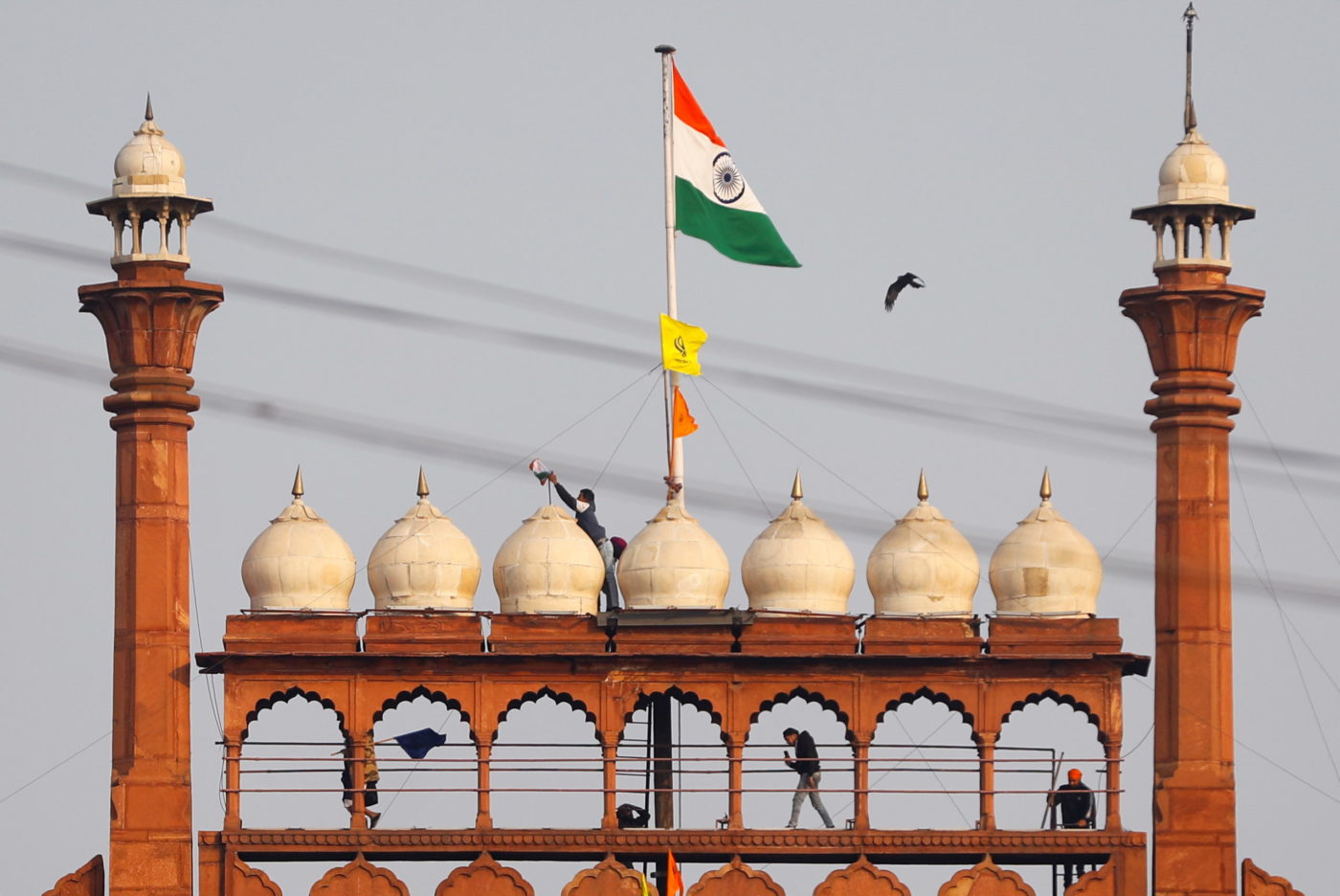
In order to break through the fog of misinformation, I chatted with Professor Avinash Singh to get a better idea on what truly transpired.
Singh who lives in Delhi is a noted former journalist who has been with The Hindustan Times for 19 years, covering everything from elite sporting events including the Los Angeles Olympics, London’s World Cup Hockey in 1985, as well as political incidents including most notably, Operation Blue Star, the raid of The Golden Temple in Amritsar. Singh has also reported for BBC and Reuters. He also penned a cover story for TIME magazine.
The Road Leading To January 26th
It all started with farmers in Punjab who have been protesting locally since June 2020 with various sit-ins across the state. These sit-ins led to the blocking of train routes in July and August. Farmers from Harayana followed suit, joined by farmers from Uttar Pradesh who expressed their grievances about not getting compensated for their sugar cane crops. As November set in, and the protests spread from Punjab to surrounding states, a sense of unity formed among the agricultural set.
Singh explained that the farmers understood the magnitude of the issue that they were willing to set aside their own historical differences for the overall cause. Such an example, as Singh pointed out, were farmers in Harayana who allowed their contemporaries from Punjab to travel through their own fields. Sacrificing their wheat so that the Punjab farmers can have a proper route towards Delhi. As the months progressed, other farmers from across India joined in on the cause and unilaterally decided to congregate with a mission to head to Delhi to express their concerns about what these new agricultural laws that the federal government had proposed would do to their livelihoods.
They eventually set up camp at the outskirts of Delhi, leading up to their first rally the “Delhi Chalo”, which took place in late November.
The four main entrances into Delhi namely the Singhu Border, Tikri Border, Kazipur Border and Shahjahanpur Border were all flooded with tractors en route to the nation’s capitol.
Preparing For A Long Struggle
By the time their official tractor rally reached the outskirts of Delhi on the 24th, 25th and 26th of November respectively, there were 200,000 to 300,000 farmers represented by over 40 unions. In order to avoid the farmers from progressing any further, the police took action with various barricades and using force. Farmers were seen being lobbed with tear gas canisters and water canons while being battered by batons. These videos of the confrontation soon went viral.
That’s when the world first started to understand what was happening in India. The farmers’ plight was now getting global recognition.
The farmers recognized the importance of the protest, as well as the fact that this would be a long haul. So they prepared food and supplies to last from three to six months. “People started pouring into Delhi, setting up community kitchens for the farmers, helping in all forms,” explained Singh. “Big organizations such as Khalsa Aid and small organizations from different parts of India started coming to Delhi to help the farmers”.
In December, the farmers decided that on January 26th on India’s Republic Day, they would conduct another huge tractor rally, which would a peaceful demonstration by all accounts. Buoyed by the symbolism of the day, the strength of their convictions, increasing support from their fellow citizens, and the attention from global media, they put their plan into action.
Putting The Building Blocks Together For The Route
The farmers were working with the police to confirm which approved routes would be offered up to them for their rally. Singh noted that the talks lasted through out January 24th and it wasn’t until late in the evening of the January 25th, the night before the rally, that they were notified of the official routes that they were allowed to use. Everything was set in motion. Tractors, trolleys, horses were festooned with flags, while protestors which included many generations of mothers, fathers and children were all set to take part.
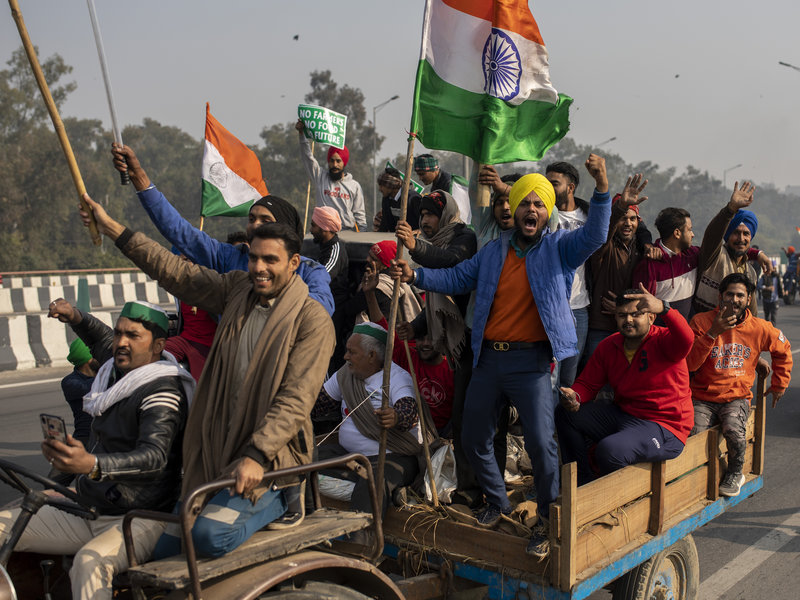
They planned on celebrating Indian Republic Day, while amplifying the importance of their cause. However it seemed that not everyone was on the same page.
One such group, the Kisan Mazdoor Sangharsh Committee, Singh explained, wasn’t in favour of the approved plan and therefore decided to lead their own protestors on another route away from the official rally and towards the government buildings including the Red Fort.
With the main rally set to start at 12:30 pm on the 26th, and proceed along agreed-upon routes, farmers who were camped out at the various borders since late November, removed the police barricades in order to make their way in.
Out of the 200,00 that were already peacefully progressing along the official route, the other group of protestors decided to instead make their way to the Red Fort where the government’s annual India Republic Day military parade was taking place nearby. Due to the maze of roadways that Delhi is known for, it wasn’t long before confusion set in according to Singh, which led other tractors to follow suit as well.
The initial group of 150 protesters grew to over 3000 by mid-morning. Thanks to the news spreading across social media, others joined in, swelling the presence to over 10,000 people.
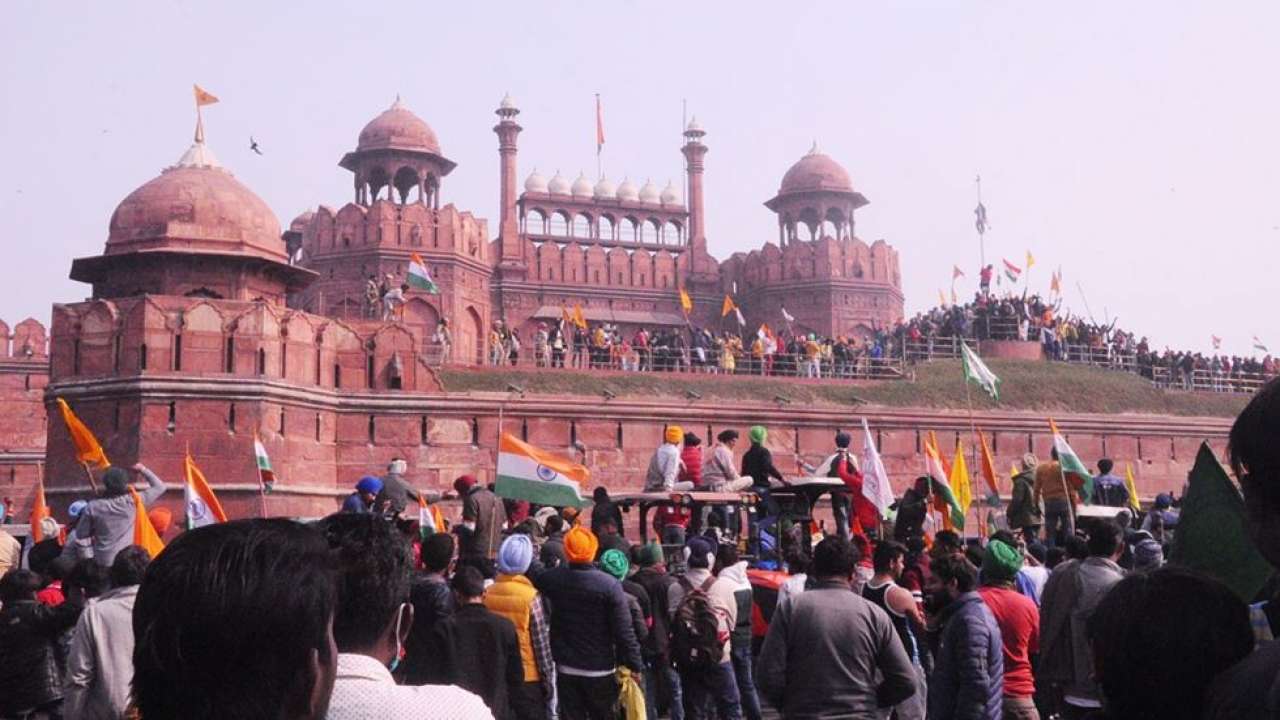
Security barricades were breached and the protestors were then met with police who were armed with tear gas and batons resulting in a clash that led to one farmer’s death and 400 police officers injured. Over 200 arrests have been made since then, including a handful of journalists who were also taken into custody amidst the mayhem.
The Flag Controversy
One of the turning points during the Red Fort clash, was when one of the protestors successfully hoisted two flags, the Kisaan flag (representing the farmers rally) and one depicting the Nishan Sahib (also known as the religious Khalsa flag).
These two flags were hoisted on one of the smaller flag poles reserved for the Prime Minister when he attends during his in-person address during India’s Independence Day in August. An additional one was tied to one of the minarets. The tallest flag pole at the Red Fort, which holds India’s National Flag throughout the year, was not disturbed. In the barrage of misinformation which flooded social media, inaccurate accounts claimed that the protesters a) desecrated the National Flag and b) raised the Khalistan Flag. Both were not true. But of these claims spread like wildfire and took on a life of its own. And became a strong talking point against the farmers’ movement.

Misrepresenting The Farmers’ Cause
Immediately after the Red Fort incident, the leaders of the main protest immediately distanced themselves from those who went to the Red Fort emphasizing that those who were there, didn’t represent the spirit of the overall movement.
So what exactly happened?
Singh points to a peculiar political element in the mix.
One person he noted was Deep Sidhu. He’s an actor-turned-activst and a BJP member who was most notably, a former campaign manager for Sunny Deol. Sidhu was captured on video holding those two flags early that morning. Singh also notes that two other legislative members of the BJP party also present at Red Fort.
Singh also explains that the gates, which lead up to the flag pole are impossible to break through. Therefore his only logical conclusion was that there was additional help — collusion from the inside.
So did the protestors who diverted from the main route and scaled the Red Fort come with other plans? Singh agrees, noting that it just seems too all too convenient.
The Tide Against Social Media
There was a deliberate effort to silence certain voices. Especially online. Twitter India banned over 250 accounts and tweets that showed support for the farmers. According to their statement this was in response to a “legal demand”. Add to that that, there were numerous internet outages in specific districts in and around Delhi.
Historically speaking, the cutting off communications has been a standard practice for India’s Office Of Homeland Security & Emergency. A move that’s often exercised due to security concerns over fear of additional violence. According to a BBC report, India has shut down their internet more than any other democratic country in the world. Most recently a practice that was widely used during the protests against the Citizenship Amendment Bill with a total of 95 shutdowns in 2019. And of course there’s that infamous blackout in Kashmir.
The Rihanna Factor
The internet blockage made its way through mainstream media, catching the attention of one notable person.
On February 2nd, pop superstar and global fashion mogul, Rihanna retweeted a CNN article and asking “Why aren’t we talking about this?!” to her 101 million followers.
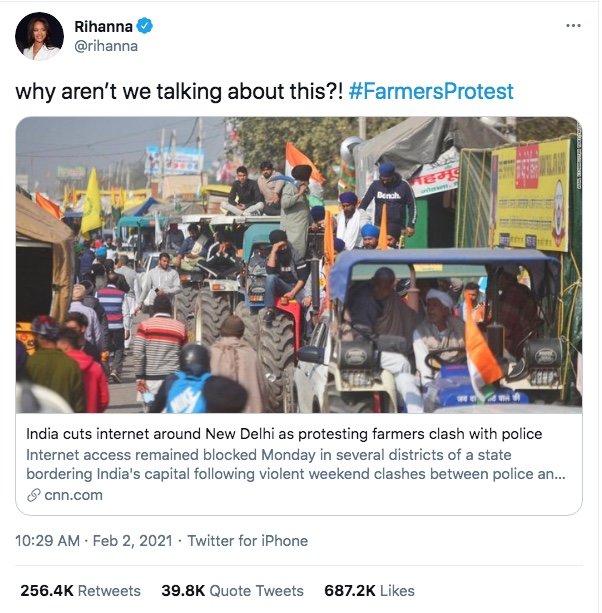
Not long after, noted climate change activist Greta Thunberg followed suit with her tweet supporting the farmers. Meena Harris a women’s right activist, and a lawyer who is also the niece of Vice President Kamala Harris also tweeted her concerns and support for the farmers as well. With sharp criticisms of the emergence of fascist-like ideologies in the political space.
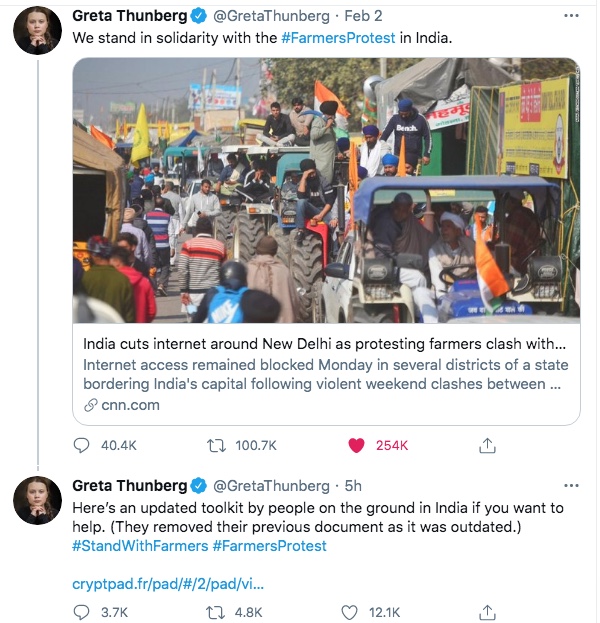
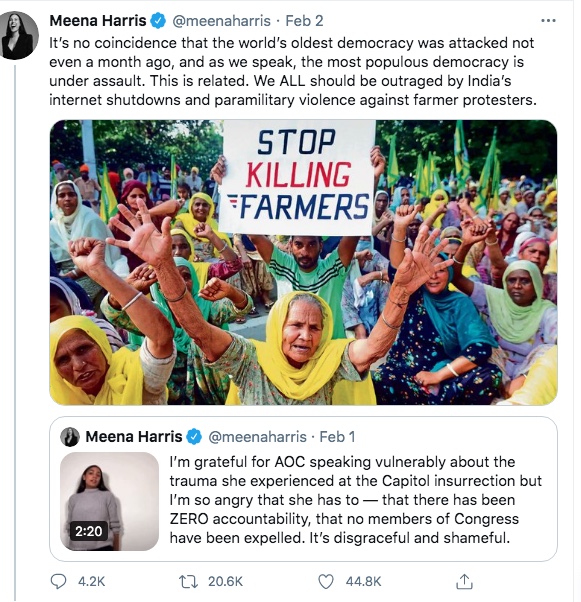
The result: #FarmersProtest was trending on Twitter.
It sparked a rebuttal from India’s Ministry of External Affairs. They released an official statement which read in part “We would like to emphasize that these protests must be seen in the context of India’s democratic ethos and polity. The temptation of sensationalist social media hashtags and comments, especially when resorted to by celebrities and others, is neither accurate nor responsible.”
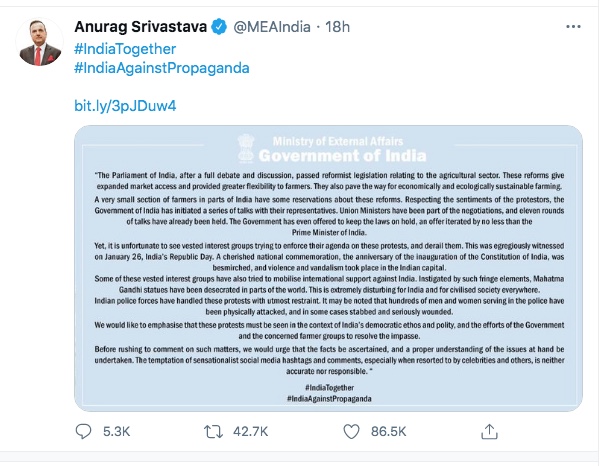
That was Hollywood. What about Bollywood?
First, it must be noted there has been tremendous social awareness when it comes to various South Asian notables including such artists as Rupi Kaur, Babbu The Painter, Lilly Singh and more, who have been consistently using their respective platforms since November .
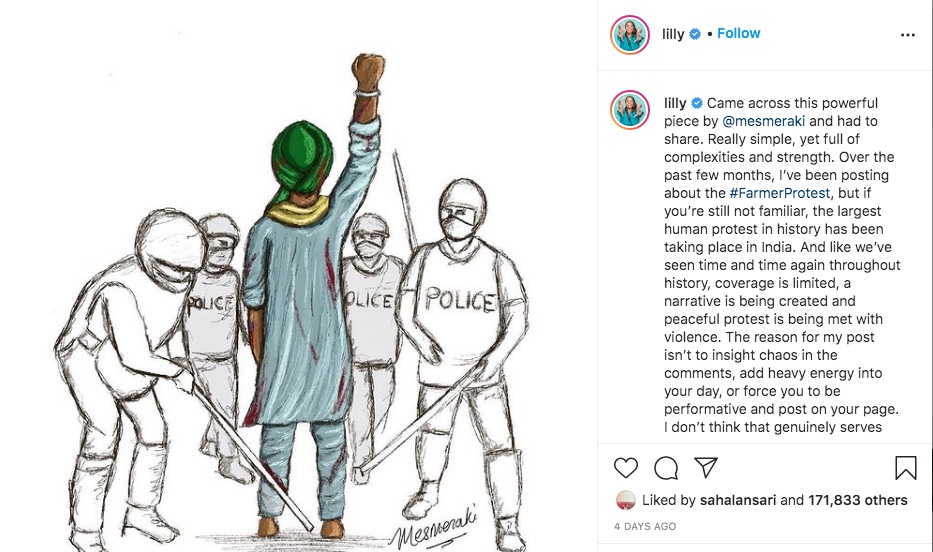
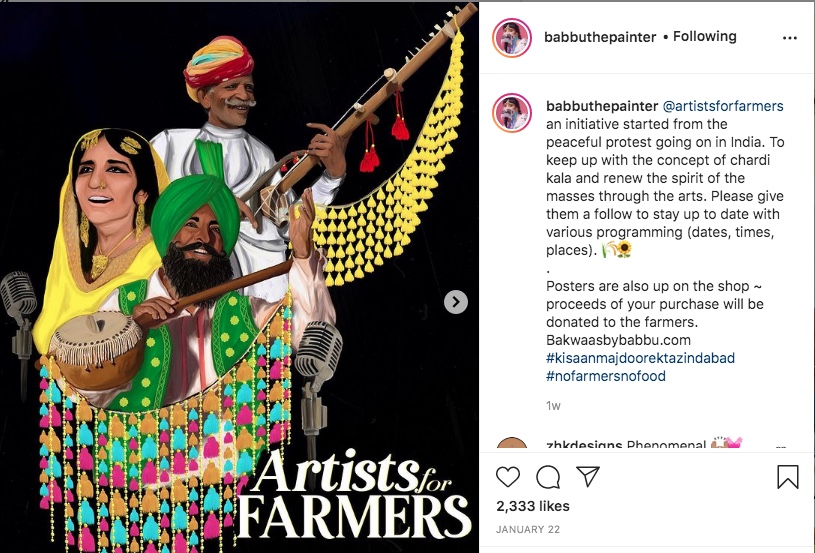
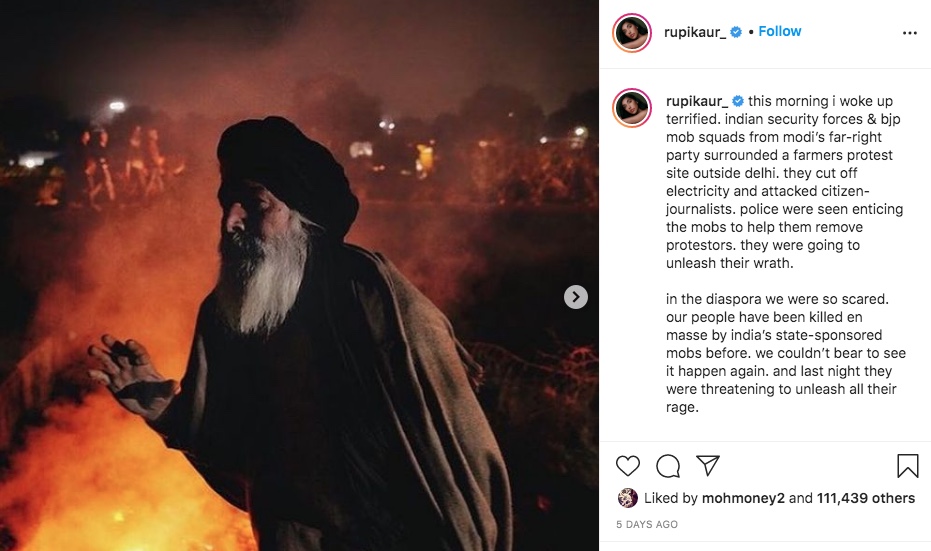
Bollywood on the other hand, is a different story.
Even though Hollywood and Bollywood share the same entertainment space, they are often found at the opposite ends of the political spectrum.
Unlike Hollywood and their disdain for Trump and far-right ideologies in general, Bollywood for the most part, has cemented their alliance with Trump’s ally, Indian Prime Minister Narendra Modi. Why? Reasons can be seen as multi-layered; from being on the right side of politics, the fear of scaring off future funding for their films, and of course appealing to Modi’s immense popularity with his base.
So when Rihanna decided to step up, some in Bollywood didn’t step back.
The party lines were drawn.
First, Kangana Ranaut a staunch Modi supporter, retweeted Rihanna’s post with her own two cents denigrating the superstar with a multitude of tweets starting with this one.
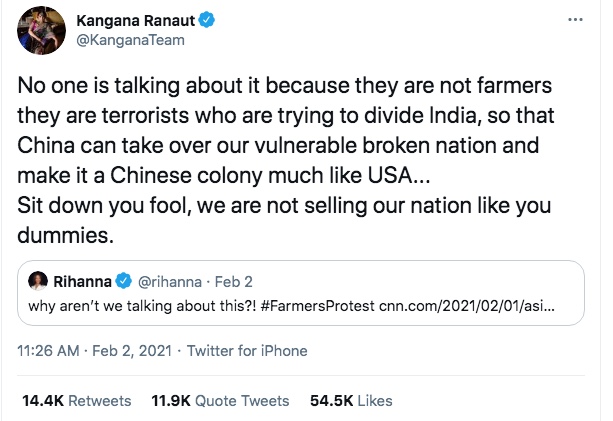
Not even 24 hours after that, a line of Bollywood stars including Ajay Devgyn, Akshay Kumar among others, came out with similar talking points exuding a more neutralized type of message along with the hashtags #IndiaAgainstPropaganda and #IndiaTogether”. Both garnering enough support to also go viral.
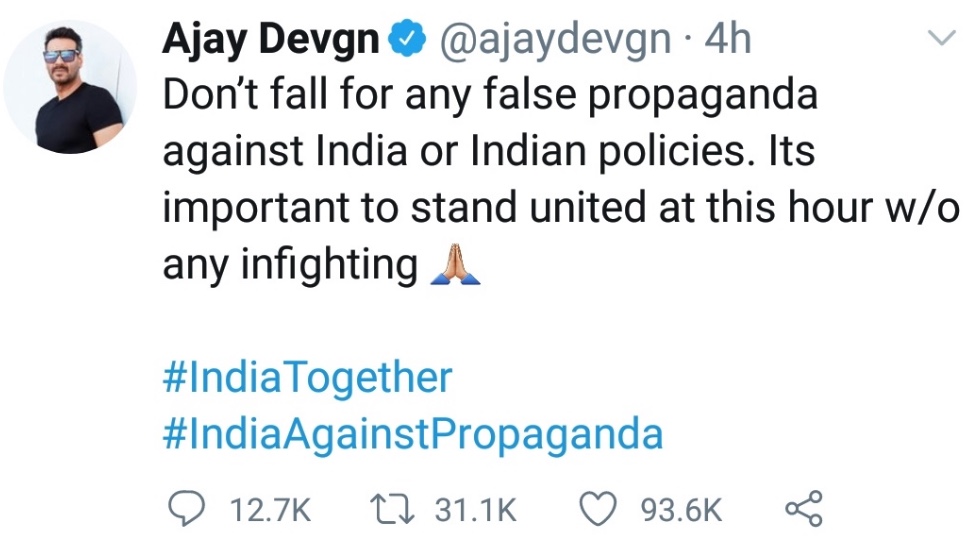
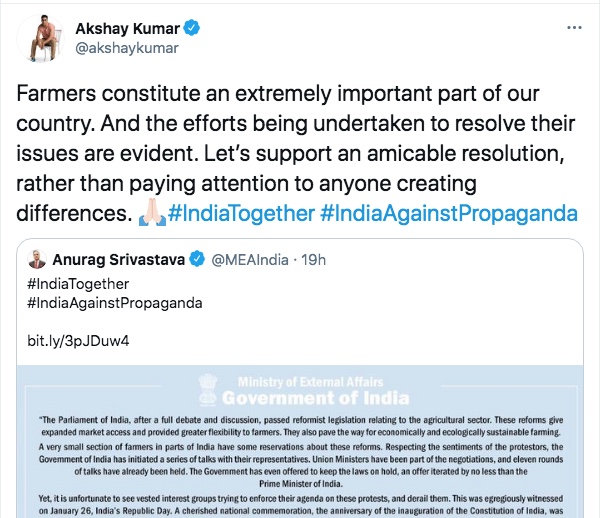
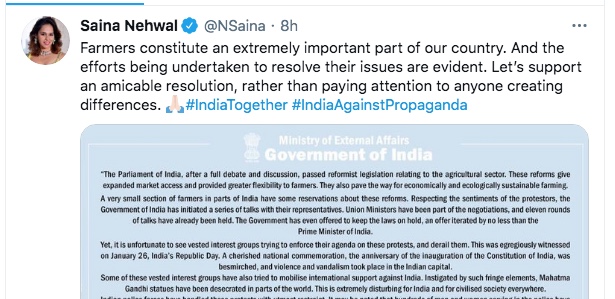
Changing The Narrative
There’s no doubt that the protestors at the Red Fort were infiltrated by those with bad intentions who just wanted to cause “mischief”, according to Singh. However a question needs to be asked: was there a bigger play in mind? One that only certain people in power can only execute?
The shifting public opinion and painting the farmers as ‘terrorists’ as some have claimed online is only “to divert the attention of the nation and the sympathy from the farmers,” Singh explained. “To show them as miscreants.”
There is also the predictable case of competing narratives when it comes to the overall media coverage. One side is being carefully curated from the government-friendly outlets (which Singh notes is “far from reality”), while those on the other side share their story. Social media has played a large part with the countless videos that have since emerged from the day, sharing the farmers’ side of what happened and discrediting the numerous highly circulated renditions.
So, who called the shots? “We can always say number 2, but number 2 will always discuss it with number 1.” Singh surmises.
He also points out that the government is muddying the waters of negotiations by registering an additional 100 unions who will be in their favour. “Now they are saying these unions are supporting the government.”
“People are divided. Farmers have multiple unions. The media is divided so you don’t know whom to believe,” notes Singh. ”So those who are forming their own opinions are turning out to be either in favour of the farmers or not in favour of the farmers.”
The argument now has turned into a patriot one, with the idea that ”you are a patriot if you are anti-farmer”, Singh explains.
It’s clear that the farmers’ plight has received global attention, which has grown in leaps and bounds since their first sit-ins in Punjab last summer. And it looks like they aren’t going to back down anytime soon, as there has been 11 sets of negotiations thus far.
According to reports, some farmers have now stocked up their perishables to last them for the rest of the year. Fighting for your livelihood takes intricate planning, support and courage.
“Can we think of surviving without the farmer?” Singh asks.
The answer is an obvious one.
Main Image Photo Credit: www.aljazeera.com (Red Fort), www.byrdie.com (Rihanna), www.biography.com (Greta Thunberg), www.glamour.com (Lilly Singh), www.indianexpress.com (Rupi Kaur)
Hina P. Ansari
Author
Hina P. Ansari is a graduate from The University of Western Ontario (London, Ontario). Since then she has carved a successful career in Canada's national fashion-publishing world as the Entertainment/Photo Editor at FLARE Magazine, Canada's national fashion magazine. She was the first South Asian in...





